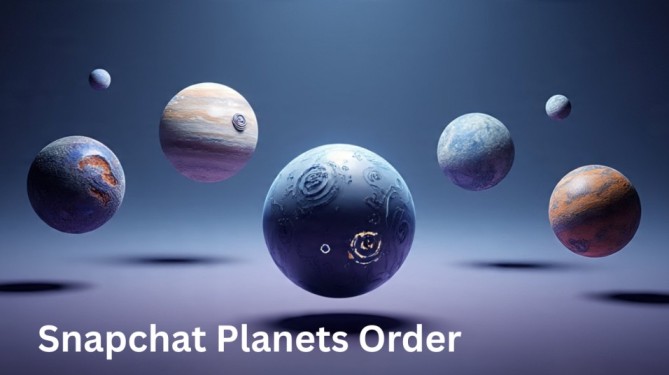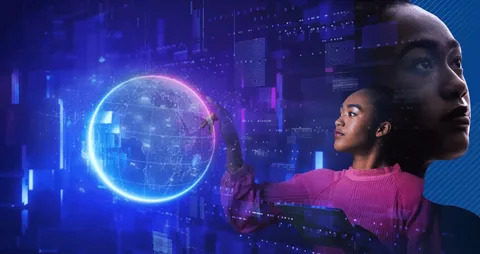In the rapidly shifting world of social media, where features are constantly evolving to keep users engaged, Snapchat has consistently stood out for its creativity and innovation. One such feature that has sparked both curiosity and excitement is the Snapchat Planets Order. This visual, gamified representation of user relationships provides a unique way to understand how Snapchat ranks your friends offering insight into digital connections in a way that’s playful and deeply symbolic.
This article provides a complete and objective overview of Snapchat Planets Order, explaining what it means, how it works, and the key factors that influence it. We’ll also explore the tradeoffs, potential challenges, and decision-making impact associated with this feature. Whether you’re a casual user or a Snapchat Plus subscriber looking to decode your social universe, this deep dive into Snapchat Planets Order will leave you informed and empowered.
What Is the Snapchat Planets Order?
Snapchat Planets Order is a premium feature available exclusively to users subscribed to Snapchat Plus. The feature visualizes your friendship hierarchy by assigning each of your top eight friends a symbolic position in a “solar system” where you, the user, are the Sun. Your best friends are designated as planets, with their proximity to the Sun representing how close you are based on interactions within the app.
The idea is simple yet engaging: The more you interact with someone, the closer they are to the Sun. So your #1 best friend is Mercury, the planet closest to the Sun, while your 8th best friend becomes Neptune, the farthest planet.
This concept, known as the Snapchat Planets Order, reflects your digital closeness through a space-themed metaphor, complete with planetary icons and Bitmoji visuals. It’s designed not only to entertain but also to provide meaningful insight into your relationships.
What Do the Planets Mean in Snapchat?
Each planet in the Snapchat Planets Order corresponds to a rank in your best friend list. Here’s a breakdown of what each planet symbolizes:
| Planet | Friend Rank | Meaning |
|---|---|---|
| Mercury | 1st Best Friend | Closest and most active communication |
| Venus | 2nd Best Friend | Strong engagement and snap exchange |
| Earth | 3rd Best Friend | High interaction with mutual streaks |
| Mars | 4th Best Friend | Frequent interaction, slightly less intense |
| Jupiter | 5th Best Friend | Casual conversations and occasional snaps |
| Saturn | 6th Best Friend | Moderate engagement |
| Uranus | 7th Best Friend | Low interaction but still among top 8 |
| Neptune | 8th Best Friend | Least interaction among best friends |
This planetary alignment isn’t random. It’s carefully curated using Snapchat’s algorithm, which takes into account a wide variety of behavioral signals.
How Does Snapchat Calculate the Planets Order?
Understanding how the Snapchat Planets Order is determined requires looking at multiple factors. Snapchat’s algorithm evaluates several interaction metrics, including:
1. Frequency of Snaps
The more often you send and receive snaps from a particular friend, the higher their chance of being a “closer” planet like Mercury or Venus.
2. Text Message Volume
Snapchat counts regular text-based chats between users, which affects the overall strength of the connection.
3. Streaks and Snap Score
Snap streaks (daily snaps exchanged for consecutive days) play a crucial role in ranking. The longer the streak, the better the chance your friend will appear in a higher Snapchat Planets Order position.
4. Mutual Engagement
It’s not just about how much you reach out—Snapchat rewards mutual effort. If both you and your friend frequently interact, the bond is considered stronger.
5. Recent Interactions
The ranking system prioritizes recent behavior over historical activity. So even if someone used to be your Mercury, they may drop to Jupiter if interactions decline.
6. Snapchat Stories and Views
Watching and engaging with each other’s stories can also add weight to the friendship ranking.
These data points are all blended by the app to create a dynamic model of your social universe, resulting in the real-time Snapchat Planets Order.
Tradeoffs of Gamifying Friendship with Planets
The Snapchat Planets Order has certainly added a new layer of fun and engagement to the app, but like all systems, it involves tradeoffs.
Benefits
-
Visual Appeal: The solar system metaphor makes digital friendships more tangible and interactive.
-
Engagement Boost: Encourages users to maintain connections and increase communication.
-
Personal Insight: Offers an introspective look at your closest connections.
Drawbacks
-
Privacy Concerns: Some users may feel exposed if others can see their position in your planetary system.
-
Misinterpretation: Algorithmic rankings don’t always align with real emotional bonds.
-
Superficial Interactions: Users might artificially inflate interaction levels just to climb the rankings.
The biggest tradeoff lies in balancing meaningful relationships against algorithm-driven ones. Being labeled a “Neptune” friend might feel demoralizing, even if that person is emotionally closer to you offline.
Challenges of Maintaining Accuracy in Snapchat Planets Order
Creating a ranking system that accurately reflects social relationships is difficult. Some of the main challenges include:
1. Overreliance on Quantitative Metrics
Snapchat’s algorithm is heavily based on numerical interaction—snap counts, message volume, streaks. But real friendship isn’t always quantifiable.
2. Temporal Bias
The system focuses on recent activity. A friend you’ve known for years may suddenly drop in your Snapchat Planets Order if you don’t interact frequently anymore.
3. Varying Communication Styles
Some people use Snapchat just to view stories, not to chat. These users may still be close friends, but the algorithm might overlook them.
4. Emotional Misunderstandings
Being labeled as a lower-tier planet may cause hurt feelings or conflict in relationships, especially among younger users who value social validation.
Snapchat has tried to strike a balance, but no ranking system is immune to these challenges.
Why Understanding Snapchat Planets Order Matters
So why should you even care about the Snapchat Planets Order?
For Regular Users:
It gives you a glimpse into who you’re most digitally connected to. It’s an entertaining, if imperfect, mirror of your social habits.
For Influencers and Creators:
Tracking your Snapchat Planets Order can help identify top-engaged followers or friends. This insight can influence how you build your online brand.
For Snapchat Plus Subscribers:
This is a key feature that adds value to the subscription model, offering personalized and exclusive insights.
Knowing how the Snapchat Planets Order works empowers users to engage more meaningfully or make intentional changes in how they use the app.
Can You Change Your Snapchat Planets Order?
No, users can’t directly set or modify their Snapchat Planets Order. It is determined algorithmically based on:
-
Your interactions
-
Recency and consistency
-
Engagement patterns
However, you can influence the order over time by:
-
Snapping Regularly – Send photo/video snaps daily.
-
Maintaining Streaks – Keep long-running streaks going.
-
Replying Promptly – Immediate responses count more.
-
Reacting with Bitmoji – These micro-interactions help.
-
Engaging in Group Chats – Though less weighted, they still matter.
With persistent effort, your planetary status can evolve.
Real-Life Examples of Snapchat Planets Order in Action
Let’s explore a couple of scenarios where the Snapchat Planets Order comes into play.
Case 1: Best Friends Reversal
Two friends, Amy and Jake, have been close for years. Amy sees Jake as her Venus, but Jake’s Mercury is someone else—Lisa—whom he recently started dating. This dynamic shows how Snapchat Planets Order is subjective to each user’s activity.
Case 2: The Fall from Mercury
Sarah was Tom’s Mercury for weeks, but after she went on vacation and stopped snapping, she dropped to Mars. Meanwhile, Tom’s Mercury became Alex, who he began snapping daily. This illustrates how easily the planetary system can change.
These situations highlight the fluid nature of the Snapchat Planets Order and how it may or may not align with real-world dynamics.
The Future of Snapchat Planets Order
Snapchat could potentially evolve this feature in several ways:
-
Custom Planet Names: Letting users name their planets for added personalization.
-
Time-Based Trends: Showing how planetary ranks change over weeks or months.
-
Group Planet Systems: Visualizing group chats as constellations or moons.
Snapchat has already proven it understands the power of blending utility with creativity. The Snapchat Planets Order is just one of many future-forward features likely to expand in depth and personalization.
Final Thoughts: Is Snapchat Planets Order Worth Your Attention?
To conclude, the Snapchat Planets Order is much more than just a flashy visual. It’s a symbol of how digital interaction is being gamified in modern communication. With its unique solar system analogy, Snapchat adds depth to friendship insights while encouraging regular engagement.
However, like any system based on algorithmic behavior, the Snapchat Planets Order comes with its own set of tradeoffs, including privacy concerns and potential emotional misunderstandings. Understanding how it works helps users strike a healthier balance between social fun and emotional intelligence.



